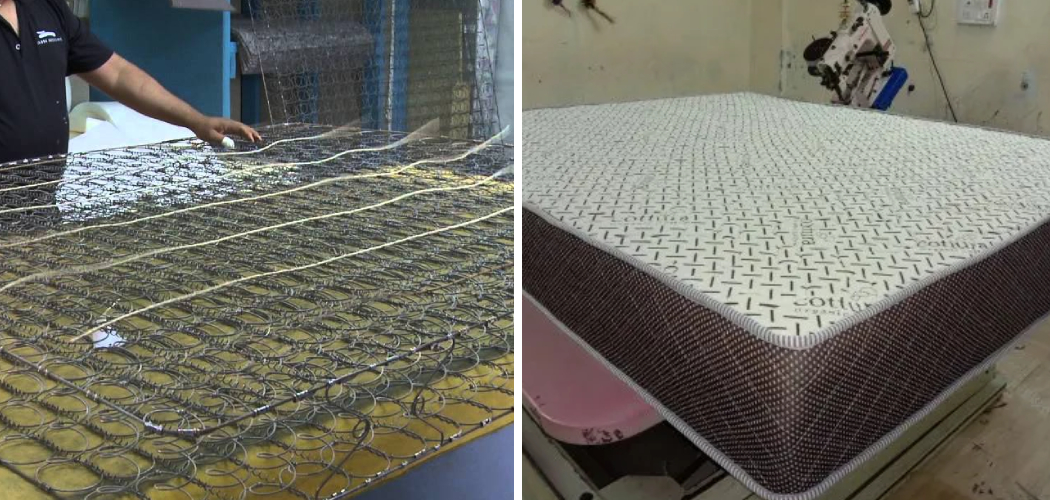Sleep, as a basic necessity of life, is something that we often take for granted. But with a quality mattress to rest on each night, getting the sleep we need can be easy. Have you ever wondered what goes into making your mattress? If so, this blog post will give you all the information necessary to make your mattress and enjoy quality sleep every night!
Whether you’re looking to save money or just want the satisfaction of making your mattress, you’ll find all the information and resources here.
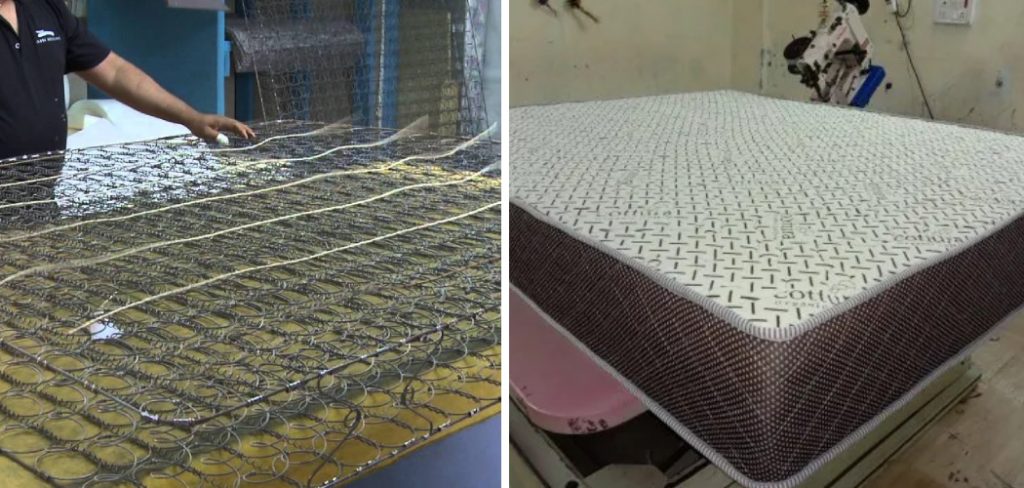
From choosing materials to measuring sizes and understanding support layers – by the end of this article, you’ll know everything there is to know about crafting your very own custom-made dream bed. So keep reading if you’re interested in learning how to make mattress from scratch with confidence today!
What Will You Need?
To make your mattress, you’ll need a few key materials:
- Foam or latex core
- Mattress fabric such as cotton or wool felt
- Box spring (optional)
- Decorative coverings, such as quilting materials
You will also need tools for measuring and cutting the material. Once you have all of these items in hand, you’ll be ready to start making your mattress.
8 Easy Steps on How to Make Mattress
Step 1: Choose Your Material
The first step in making your mattress is to choose the material that you will use for the core. This will provide the support you need to get a good night’s sleep. The most common materials are foam and latex. Foam is cheaper and can be cut to any size, making it a popular choice for DIY mattress makers.
On the other hand, latex is more durable and provides excellent support, making it a good choice for those with back issues or who prefer a firmer mattress. Consider your comfort preferences, budget, and any potential allergies when choosing your material.
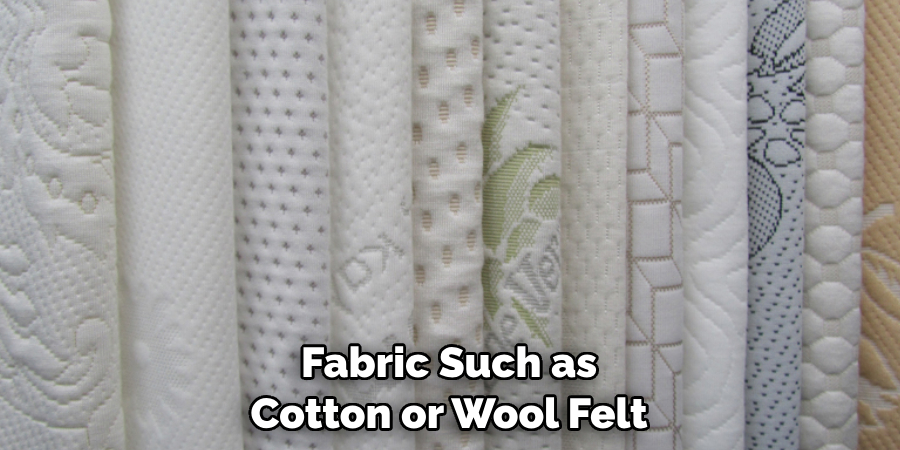
Step 2: Determine the Size
After deciding on the material, the next step is to determine the size of your mattress. This will depend primarily on your bed frame size and personal preference. Standard mattress sizes are twin, full, queen, and king, but you can also custom size your mattress if preferred. Measure your bed frame and ensure you have enough room for the mattress.
Remember to leave a bit of space for any bedding or covers that will be added later. Once you have the measurements, cut your chosen core material to fit these dimensions. Always double-check your measurements before cutting.
Step 3: Adding Comfort Layers
Now you’ve got the core of your mattress, it’s time to add some comfort layers. These are typically made from softer cushioning materials like memory foam, cotton, or wool, which add plushness and comfort to your mattress.
You can add multiple layers of different materials depending on your comfort preferences. Remember, the goal is to balance support and comfort.
Once you’ve selected your comfort layer materials, cut them to the same dimensions as your core. Stick these layers onto your core using a safe adhesive, ensuring they are evenly spread without any lumps or gaps.
Step 4: Covering Your Mattress
The next step is to cover your mattress once the core and comfort layers are intact. This layer, often called the ticking, provides a clean, finished look and protects the inner materials of your mattress.
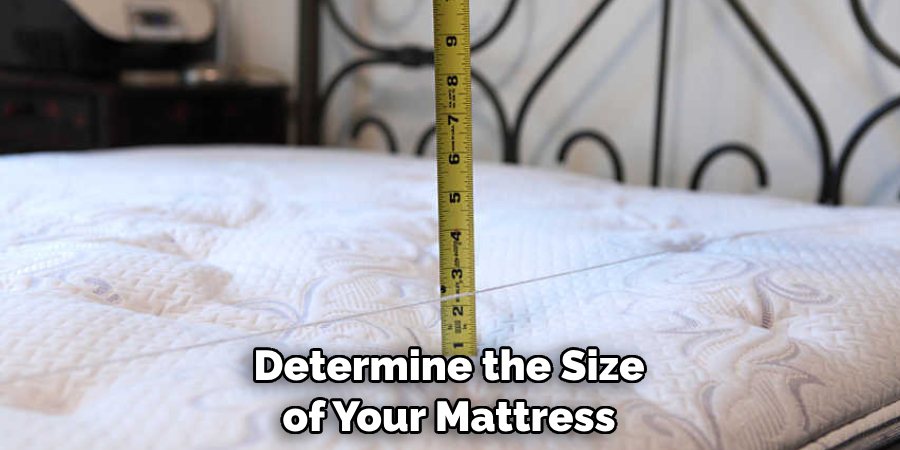
Cotton or wool felt are popular choices due to their durability and breathability. Measure your mattress carefully, considering the thickness, length, and width. You’ll need enough fabric to cover all sides and to turn the edges under for a neat finish.
Once you’ve cut your fabric, use a sturdy thread and stitch along the edges to secure it to your mattress. Ensure the cover fits snugly, without any wrinkles or loose areas.
Step 5: Creating the Box Spring (Optional)
A box spring is a great addition if you want to add extra support and height to your mattress. To create your own, you’ll need a sturdy wooden frame matching the dimensions of your mattress.
The frame should be filled with evenly spaced wooden slats to support the mattress and prevent it from sagging. Cover the box spring with the fabric used for the mattress ticking for a cohesive look. Ensure you securely attach the fabric to the frame fold and stitch the corners neatly.
Step 6: Adding Finishing Touches
The final step in making your mattress is to add the finishing touches. This could include adding decorative coverings or quilting the top of your mattress for extra comfort and aesthetic appeal.
Quilting materials can be anything from foam to cotton or wool batting. Once you’ve chosen your quilting materials, cut them to the size of your mattress top and attach them securely. If you opt for a quilted top, you can stitch the quilting material directly onto the mattress cover in your preferred pattern.
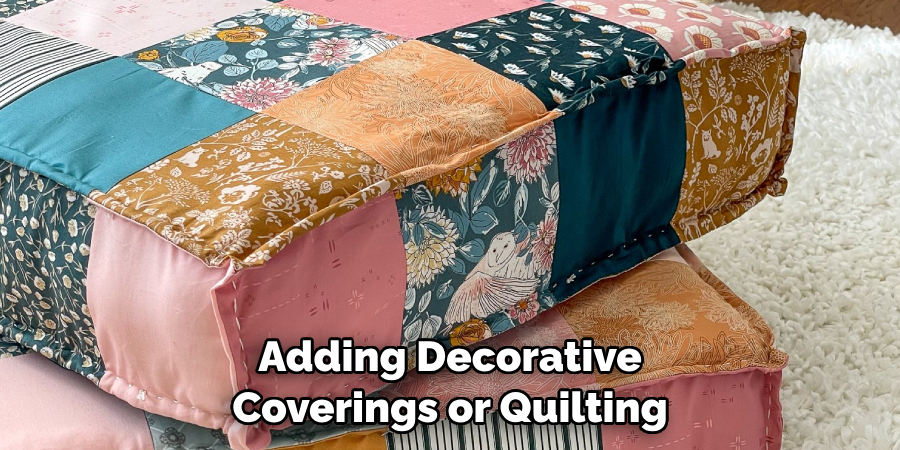
This not only adds a beautiful finish but also helps to keep the comfort layers securely in place. Make sure that all your stitching is even and secure. After you’ve completed the quilting, your handmade mattress is ready to be used.
Step 7: Testing Your Mattress
After you finish making your mattress, the next critical step is to test it out. Lie down on your mattress and assess its comfort, support, and firmness level. Remember to check its stability, size compatibility with your bed frame, and overall look.
If you notice any areas where the comfort layers are uneven, or the cover isn’t snug, make the necessary adjustments. Remember, the goal is to create a mattress that looks great and offers you the support and comfort needed for a good night’s sleep.
Step 8: Maintaining Your Mattress
Once you’ve made your mattress and are satisfied with its comfort, the next step is to ensure its longevity. Regular maintenance is key to keeping your mattress in good condition for years. Rotate your mattress every three months to ensure even wear. Keep it clean by using a mattress cover, and promptly clean up any spills to prevent stains and odors.
Fluff the comfort layers periodically to retain the mattress’s plushness. Also, when moving your mattress, always lift it—dragging can cause the inner materials to misalign. By adhering to these maintenance tips, you’ll be able to prolong the life of your self-made mattress and enjoy its comfort for a longer time.
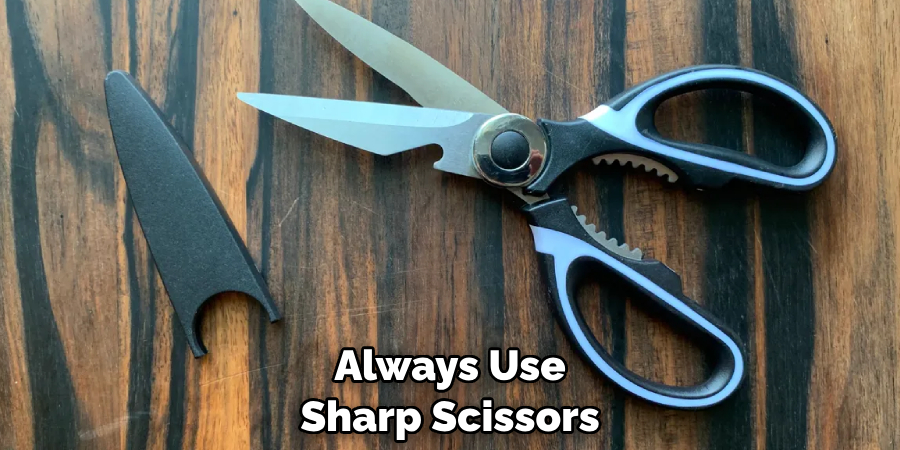
By following these steps and taking the time to customize your mattress, you can create a unique and cozy haven for yourself. With a few tools and effort, you can craft a mattress that offers just the right level of comfort and support. Now is the perfect time to get creative and start building your dream bed!
5 Additional Tips and Tricks:
- Always use sharp scissors or cutting tools for a smooth and even edge when cutting your material.
- To ensure the evenness of the comfort layers, use a ruler to measure each layer as you add it.
- If you’re using foam for the core and comfort layers, let it expand fully before adding additional layers. This will help the mattress to maintain its shape.
- If you’re using an adhesive, make sure it is non-toxic and safe for use with mattresses.
- If your bedframe has slats instead of a flat surface, consider using wooden planks or plywood for extra support between the frame and mattress. This will keep the mattress from sagging over time.
With a few tools and some effort, you can make your mattress and have the perfect place to rest your head. By following these steps and taking the time to customize it for comfort and support, you’ll be able to craft a unique sleeping experience that fits just right.
5 Things You Should Avoid
- Make sure to check the quality of your material. If you don’t buy good quality materials, it could result in an inferior mattress that won’t last long.
- Avoid using furniture staples to hold layers together, as they may come loose over time and damage your mattress.
- Steer clear of strong adhesives or glue – opt for non-toxic alternatives that are safe for use in mattresses.
- Remember to measure the thickness of your mattress before cutting the fabric – this will ensure an even, snug fit when it comes time to attach the ticking.
- Avoid cutting corners – take the time to build a sturdy frame and add extra layers of foam or batting if needed for extra comfort and support.
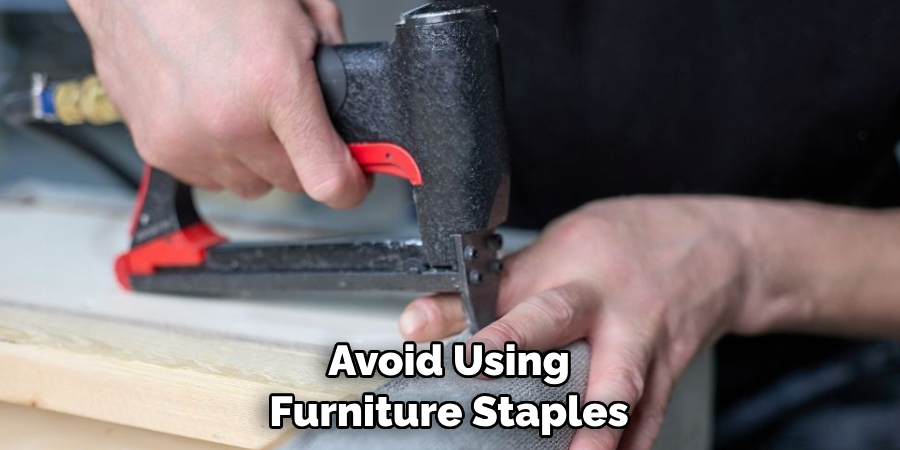
By avoiding these mistakes, you can create an excellent mattress that will have you sleeping soundly for years to come! With the right tools and effort, you can craft your custom mattress and experience the comfort and support it provides.
What Makes a Luxury Mattress?
Several factors can be considered for those looking to create a luxurious sleep experience. For starters, opt for higher-end materials such as natural latex foam, organic cotton batting, or wool for the comfort layers and ticking. These materials provide superior comfort and support and offer better breathability to keep you cool at night.
Additionally, consider adding extra layers of comfort or support to your mattress. This could include adding a pillow top or quilting for that plush, luxurious feel you only get from luxury mattresses.
Finally, invest in a quality frame and topper for your mattress. High-end frames are designed with durability and stability, keeping your mattress well-supported over time. Likewise, an appropriate mattress topper can help extend the life of your mattress and provide enhanced comfort and support.
By considering these factors, you can create a luxurious sleep experience tailored just for you. By investing in quality materials and considering key elements like additional layers or a supportive frame, you can craft a mattress that will have you sleeping soundly and feeling refreshed for years.
Which Type of Mattress is Best?
The best mattress type for you will depend on several factors, including your sleeping habits, body weight, and preferences. For instance, if you tend to sleep hot then a cooling mattress would be ideal. On the other hand, if you’re a side sleeper, an extra layer of foam or batting in the comfort layers would help relieve pressure for those areas.
Regarding body weight, lighter sleepers may prefer a softer mattress, while heavier sleepers should opt for a firmer model with extra support. Lastly, your personal preferences will also play a role in choosing the best type of mattress. If you like to sink into your mattress, choose one with extra foam or batting in the comfort layers; if you prefer a more responsive feel, select one with firmer materials.
By considering these factors, you can decide which type of mattress is best suited for your individual needs and preferences. With the right information, you can craft a mattress that offers just the right amount of comfort and support to ensure a great night’s sleep!
What Makes Mattresses Soft?
Soft mattresses are typically made with foams and batting, providing cushioning and comfort. Foam layers like memory foam or latex foam contour your body shape, allowing for a cradling feel that is both comfortable and supportive. As for comfort layers, batting such as wool or organic cotton provides a plush layer of cushioning that makes the mattress more inviting and luxurious.
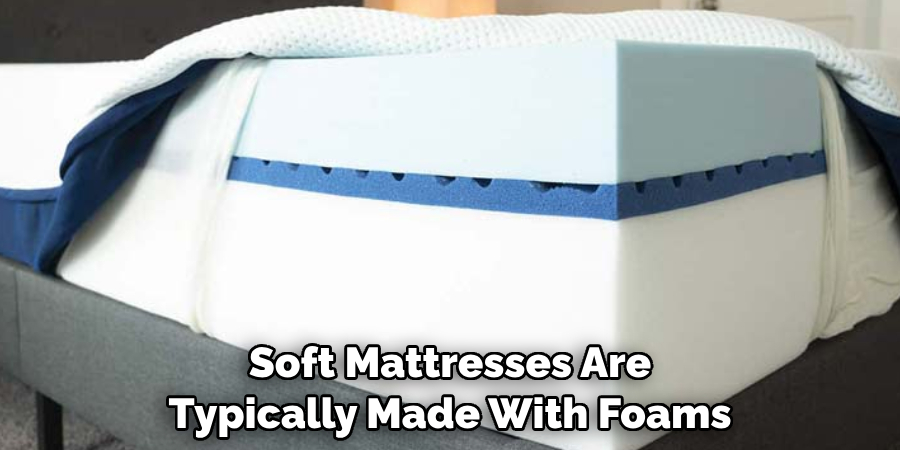
For those who prefer a softer mattress, look for materials that are high in density, such as memory foam or latex foam. Additionally, consider adding extra layers of comfort or support to your mattress, such as an additional layer of batting or added quilting.
By understanding which materials make for soft mattresses, you can craft one that provides the ultimate comfort and support.
Conclusion
So there you have it, a full guide on how to make mattress from start to finish. It may seem intimidating initially, but the rewards for having a custom mattress are impressive, whether contributing to environmental sustainability, saving money, or honoring the tradition of handcrafted furniture.
With this blogpost and video guide, we hope that you now feel empowered to make your mattress. Who knows? With enough practice and mastery, you could even make your next project the pride of the bedroom!
A mattress is an investment everyone should consider when searching for their holy grail of comfort. The process takes time and won’t always be easy—but in the end, having something beautiful constructed with your hands is more than worth the effort.
